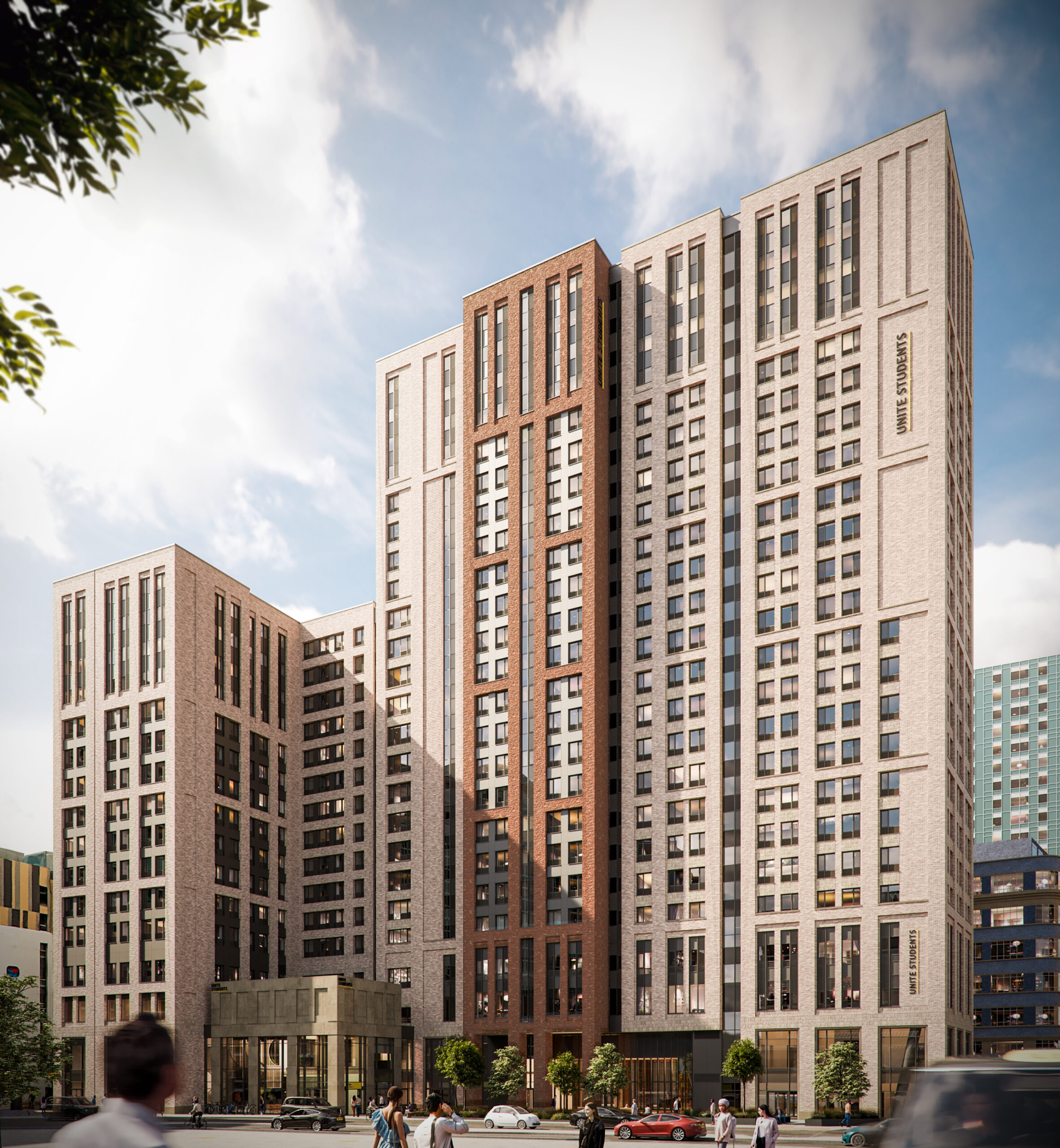Benefits of purpose-built student accommodation – creating value for local communities
5 May 2022
In recent decades, higher education has grown significantly – and local infrastructure has not always dealt well with the opportunity this provides for everyone. Growth in student numbers in the UK shows no sign of abating, reaching 2.66 million last academic year[1]. Students need homes, and many live in Houses of Multiple Occupancy (HMOs), putting pressure on local housing availability for families. With HMOs in London containing an average of 2.5 people, a new 1,000-bed student accommodation scheme would potentially free up 400 homes[2]. This is the scale of the problem that purpose-built student accommodation providers (PBSA) could solve.
But just as local amenities have been slow to keep up, so too have the attitudes of some local communities. The prevailing cultural assumptions about students are often outdated, and a far cry from the studious, committed young people that one sees on any campus across the UK. Unfortunately, HMO landlords and PBSA providers alike sometimes face resident concerns, which are vital to address – even in the cases when complaints, particularly around noise or antisocial behaviour, are unjustified.
So how can PBSA providers generate the lasting goodwill of local communities? Simply put, the better the PBSA sector can communicate its genuine care for local communities and demonstrate the value to them through the provision of properly managed and integrated accommodation, the stronger bonds between both will become. And with the advent of frameworks like the government’s “London Plan”, which look set to be mirrored by other city authorities, the relationship between community and developer is more important than ever.
PBSA providers need to work harder to communicate its position as true, long-term, embedded partners of local communities. While it is true that UK student spending supports more than £80 billion of UK economic output (and generates £25 billion of Gross Value Added), a local resident in Sheffield, Manchester, or Liverpool, where students have a strong presence, is unlikely to consider that in the balance.
Part of the problem is the persistent fallacy that the student economic ecosystem is somehow split off from the towns and cities that host universities; the ‘town vs gown’ idea. In fact – as former students would agree – students develop incredibly strong ties to their communities. Many regard the coffee shops and bars where first adult friends are made with a great deal of affection. When local residents assume that students are somehow not part of communities, they fail to recognise this emotional investment, which also leads students into volunteering or community work. For example, in Manchester alone, one volunteering programme by Unite Students, Manchester Leadership, contributed £266,611 into the local economy in just one year.
But on top of this, PBSA providers need to show how much it wants to help local ecosystems thrive. Social integration is a vital piece of the puzzle for the success of the proposition up and down the country. As such, it needs to be factored into accommodation plans at the earliest stage.
Actions speak louder than words, and providers need to demonstrate the positive impact in communities. For example, one Unite Student property in London, Stapleton House, hosts Maha Devi, a yoga therapy charity providing heavily subsidised therapy to children and adults with special needs. Not only is this providing a community service, but the tender was awarded by a committee of local stakeholders, including students and local community councillors. This has helped the charity increase the number of sessions it delivered to the local community by 52% year-on-year. Alongside this they have become a hub for the local community with a new café opening within the premises offering work placements to young people with learning difficulties. It also shows how developers can maximise the impact of Section 106 regulations, which stipulates providing a community space to serve the local area. In addition, Unite Students’ new development at Hayloft Point, Aldgate East, London is providing 663m2 of community space at the heart of the building.
Thankfully, student accommodation today is unrecognisable from the student house shares – with damp, mould and a broken boiler included in the rent – which characterised the student lives of yesteryear. High-quality, affordable accommodation is part of the world-leading higher education package which our nation has to offer. Companies like Unite Students are not simply accommodation providers but should become truly integrated partners and help put students at the heart of local life.
[1] commonslibrary.parliament.uk/research-briefings/cbp-7857/
[2] National Planning Policy Framework and Greater London Authority

